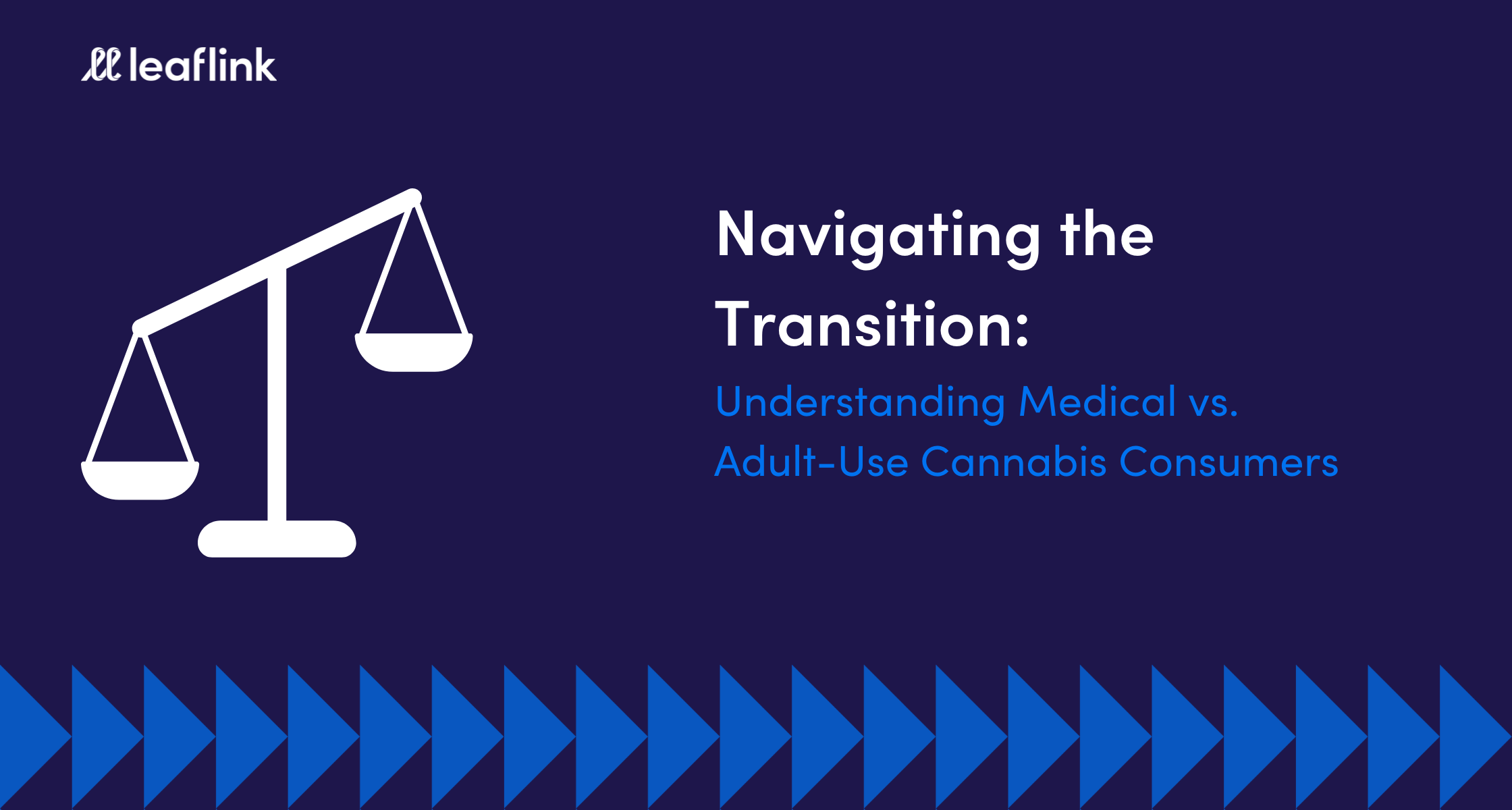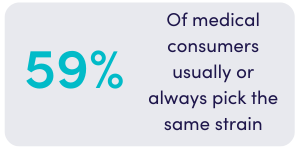
Understanding Medical vs. Adult-Use Cannabis Consumers
Navigating the shift from medical to adult-use cannabis sales can be challenging but rewarding for operators. To be successful, understanding medical and adult use cannabis consumers differences (and similarities) is essential. This blog post compares these consumer groups across four key areas — demographics, buying behavior, product preferences, and price sensitivity — to help operators tailor their approach. By adapting to these differences, businesses can better meet customers’ needs, enhance loyalty, and drive growth in this expanding market.
What sets adult use consumers apart from medical consumers?
The first mistake operators make on the journey to expanding into adult use is assuming that what works for medical consumers will work for recreational consumers. It’s important to understand the behavioral and demographic differences between adult use and medical consumers and to tailor your approach accordingly.
Demographics & Personas

According to the Journal of Cannabis Research and Headset, Adult Use consumers are most likely to be millennials, compared to medical consumers who average 45 years old and caucasian (87.5% of patients), but both cohorts are more likely to be male.
However, both adult use and medical consumers may span a number of different personas based on their consumption preferences, reason for consuming, and more. Understanding where your customers fit within these personas will help you stock products they want and drive loyalty. Check out some examples of the different personas published by New Frontier Data or other free online resources.
Buying Behavior

Medical consumers typically seek products for specific health conditions (such as pain management or anxiety), and according to High Times and New Frontier Data 59% of patients usually or always pick the same strain that they know work for their ailments. In contrast, adult use consumers may be more varied in their buying habits, with varying frequency and willingness to try new products or brands.
Product Preferences

According to Headset, adult use consumers prefer Flower, with preference for products like edibles, concentrates, and pre-rolls varies depending on their age. However, a study from USC indicates that medical consumers prefer vaporizers, tinctures, and tablets.
Price Sensitivity
2019 Research from NCBI shows that medical consumers prioritize ‘quality’, ‘strain type’ and ‘CBD’ as the most important factors influencing their purchases. In contrast, ‘quality’, ‘price’ and ‘strain type’ were most important. This tells us that medical consumers generally exhibit a higher tolerance for price variations due to the necessity of their purchases, often prioritizing quality and efficacy over cost. Conversely, adult use consumers may be more price-sensitive, seeking the best value for their recreational spending. To address this, operators should consider offering a range of price points and product tiers to appeal to both budget-conscious and premium-seeking adult use consumers.
What’s next?
Understanding consumer driven demand is essential for improving retail sales. Check out Unit One of LeafLink’s Retail Academy to learn more tips and tricks to improve retail sales.